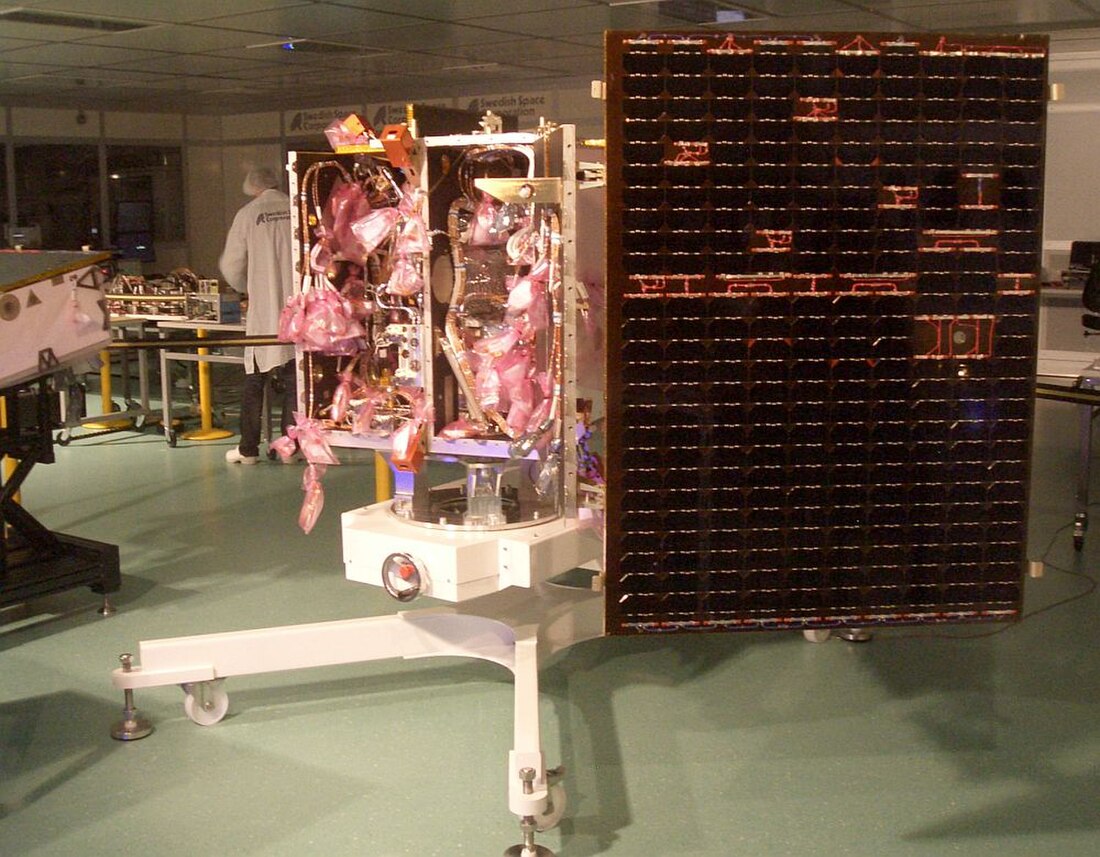Prisma (satellite project)
From Wikipedia, the free encyclopedia
Prisma is a satellite project led by the Swedish Space Corporation (SSC) which consist of two satellites that fly in formation.[1] Prisma is operated in collaboration with CNES, the French space agency, which provides the radiofrequency metrology system that enables the satellites to fly in close formation while autonomously avoiding collisions.[3]
 Prisma satellite during integration | |
| Mission type | Technology demonstrator |
|---|---|
| Operator | Swedish National Space Board, DLR, CNES |
| COSPAR ID | Mango: 2010-028B Tango: 2010-028F |
| SATCAT no. | Mango: 36599 Tango: 36827 |
| Mission duration | 1 year planned 14 years, 9 months and 10 days elapsed |
| Spacecraft properties | |
| Manufacturer | Saab Ericsson Space, Omnisys Instruments, ECAPS |
| Launch mass | Mango: 145 kg (320 lb) Tango: 50 kg (110 lb) |
| Dimensions | Mango: 80 cm × 130 cm (31 in × 51 in) Tango: 80 cm × 31 cm (31 in × 12 in) |
| Power | Mango: 300 watts Tango: 90 watts |
| Start of mission | |
| Launch date | 15 June 2010, 14:42:16 UTC[1] |
| Rocket | Dnepr rocket |
| Launch site | Dombarovsky 370/13 |
| Contractor | ISC Kosmotras |
| Orbital parameters | |
| Reference system | Geocentric |
| Regime | Sun-synchronous |
| Semi-major axis | 7,086 kilometres (4,403 mi)[2] |
| Perigee altitude | 668.3 kilometres (415.3 mi)[2] |
| Apogee altitude | 749 kilometres (465 mi)[2] |
| Inclination | 98.4 degrees[2] |
| Period | 99 minutes[2] |
| Epoch | 24 March 2015, 11:08:39 UTC[2] |
It was launched, along with the PICARD spacecraft, on 15 June 2010 on a Dnepr launcher from Dombarovskiy Cosmodrome, near Yasny, Russia. Its primary objective is to test autonomous formation flying.[1][4] A secondary objective was to flight test a new monopropellant thruster using ammonium dinitramide (ADN) propellant.[5]
On 12 August 2010, SSC reported that the two satellites, called Mango and Tango, had separated from each other for the first time.[6]
References
External links
Wikiwand - on
Seamless Wikipedia browsing. On steroids.
